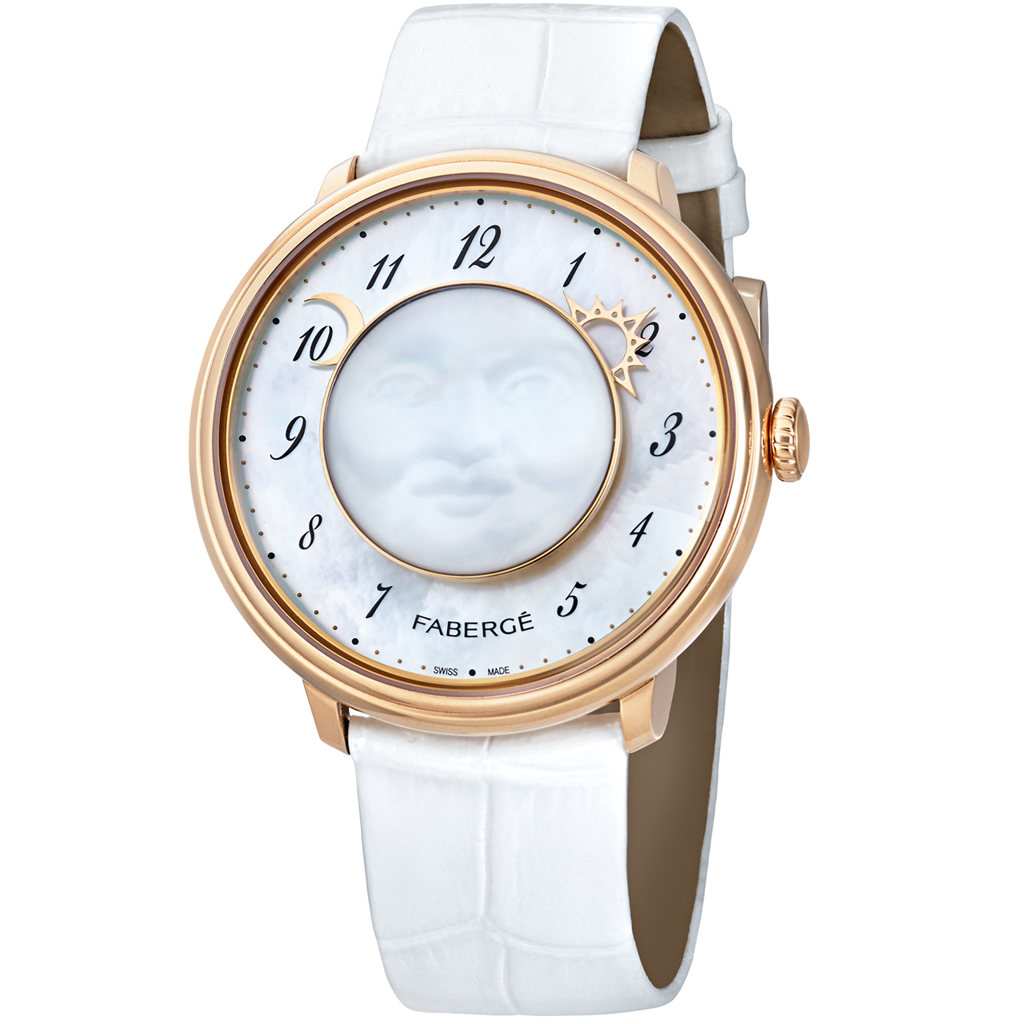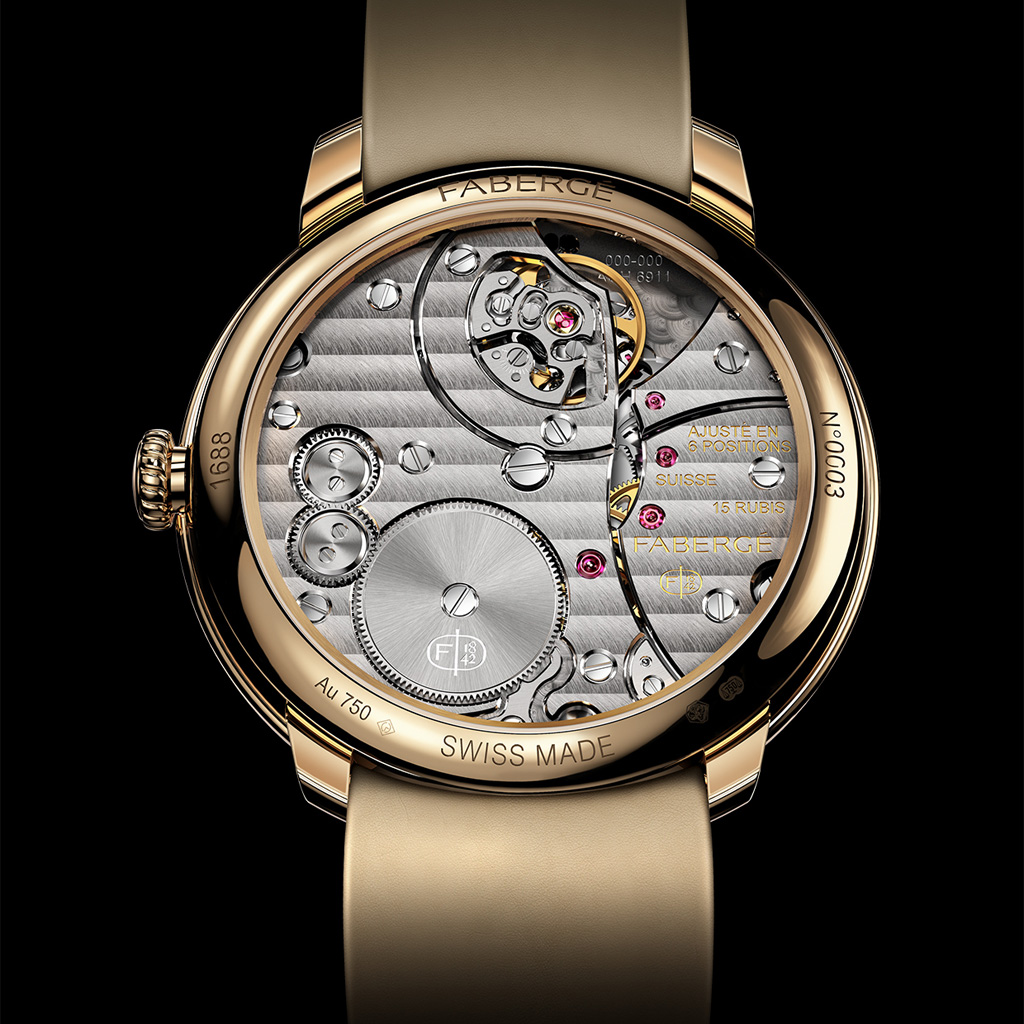
Fabergé Lady Levity
Power reserve: 50 h, 21600 vph
Fabergé is a brand whose history is steeped in the tradition of exquisite artistry, always pushing the boundaries of creativity and craftsmanship.
The new Fabergé Lady Levity timepiece from the Fabergé Dalliance collection upholds this tradition with an imaginative dial designed to surprise and delight, inspired by a silver gilt, enamel and rock crystal desk clock created by Fabergé workmaster, Henrik Wigström, in Saint Petersburg around 1910.
While the central element of the Fabergé Lady Levity features a man-in-the-moon decoration, the concept behind the watch's design is intended to offer owners the opportunity to customise their watch. Fabergé adopted a technique that has never before been used in this manner in watchmaking. The chosen motif is printed in platinum on a domed sapphire crystal before white mother-of-pearl is set on top to match the peripheral dial. As such the motif is not immediately apparent, except at certain angles when the light catches it and provides one of Fabergé's signature surprises. The printing technique means that the customer can specify any design they desire within the dimensions of this crystal canvas.
Following Peter Carl’s strategy of employing the most skilled artisans, Fabergé turned to timepiece workmaster Jean-Marc Wiederrecht and his team of horological experts at Agenhor to develop the manual AGH 6911 calibre at the heart of the new Fabergé Lady Levity. The 36mm watch uses stylised indicators to display the time; a crescent moon for hours and rising sun for minutes, tracking against a white mother-of-pearl ring dial with grey indices. As no motion work is present to turn hands at the central axis, the AGH 6911 instead features a central void which allows a supporting structure to be secured into the movement itself. It can therefore support a comparatively large mass, at least when compared to other horological components.



